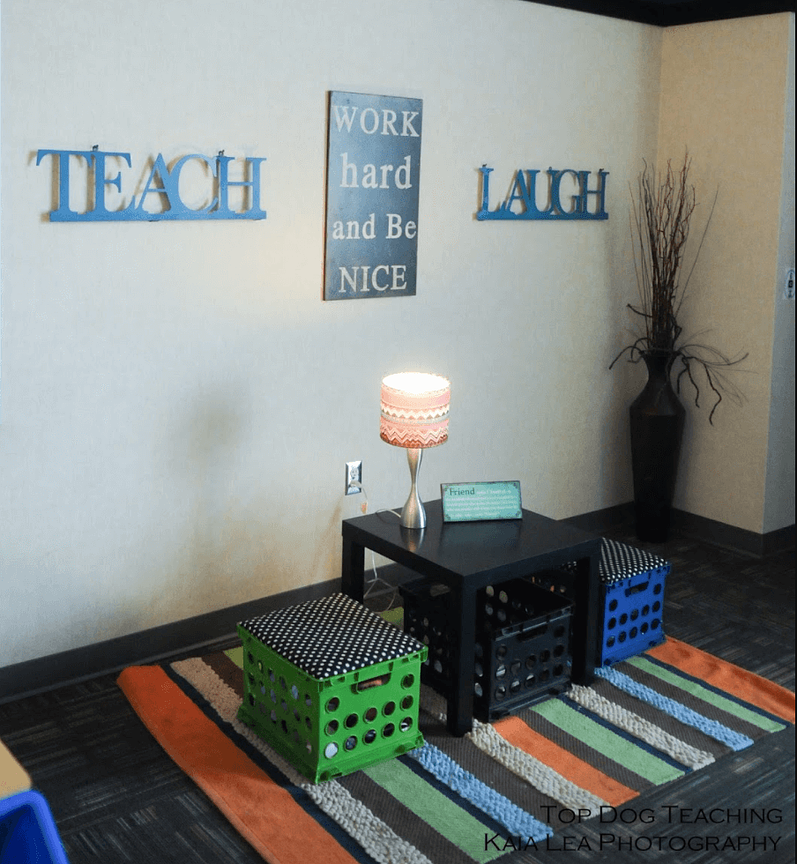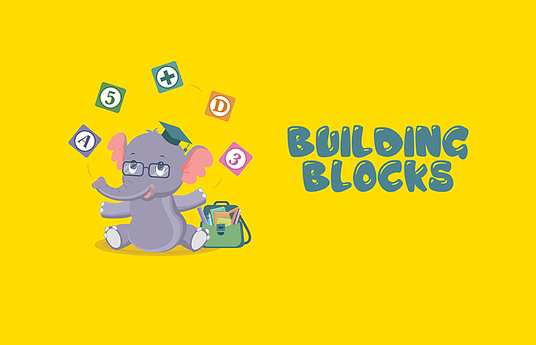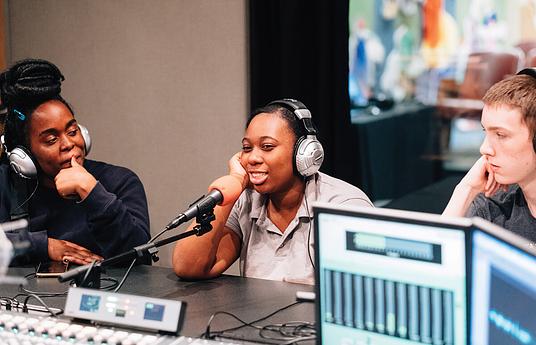Whether they sit at individual desks or at a group table, students are almost always told where to sit and who to sit next to. Adults recognise that different people work best in different environments. Some prefer a padded armchair where others need an upright chair and a desk. Yet children are rarely offered the choice of where to do their work. Instead they spend several hours a day in the one place.
The traditional arrangement of desks does not always lend itself to the collaborative group work and communication which shape education. Instead, classrooms look as they did a hundred years ago. Inflexible spaces are less likely to foster creativity or engage and motivate students.
Inspired by a visit to Starbucks, Kayla Delzer decided to redesign her Grade 2 classroom. She observed the way that adults were working in the cafe and noticed that some sat with laptops on their knees while others sat upright at tables. Everyone worked differently and everyone had made that choice for themselves. Kayla decided to give that choice to her students.
She considered each area of her classroom carefully, always put the students at the centre of her design, and created various different zones. Unnecessary furniture was removed and a wide variety of tables and seating brought in. The effect was to create a dynamic environment where students were free to choose their own seats.
As well as an open area for whole class teaching, there are mats and clipboards so children can work on the floor or they can choose to sit on exercise balls at a table. There are low tables with cushions and tall standing desks. With no seating chart, students can choose where they sit and for how long. Some students need to move a few times during a lesson where others prefer to stay where they are.
A good level of classroom management is required for a productive flexible classroom environment and developing this is an important part of the flexible seating process. At the beginning of the year, Kayla allows her students to try out all the different seating arrangements. Then gradually they are allowed to choose where they sit for each task. The students and teacher co-create a set of norms for using the space. For example, children must walk to a seat and if there is a squabble over a particular seat either the students solve it amicably or neither gets the seat. If children do not work sensibly they may lose their seat choice privileges. All students know that the teacher reserves the right to move them.
As a result of the flexible classroom, Kayla has seen an increase in collaboration, motivation and engagement. The children are excited to come to school and have a love of learning. Distraction has reduced and test scores even seem to be up.
Those wishing to create flexible seating in their classrooms may meet with some skepticism from others though this may pass once they see the positive effects of such a classroom design. Flexible seating does also make demands on the teacher. By allowing students the power to choose where they sit, they may feel that their own power is slightly diminished. It requires a change of mindset as well as a change of furniture.
Health and safety legislation may need to be considered in each country regarding the use of unusual objects, such as milk crates, as seating.
Flexible seating has been shown to be particularly beneficial for students with additional support needs. Research suggests that moving and fidgeting help students with ADHD to concentrate. In a traditional classroom, these students may stand out but in a flexible classroom everyone is given the opportunity to move as necessary.



